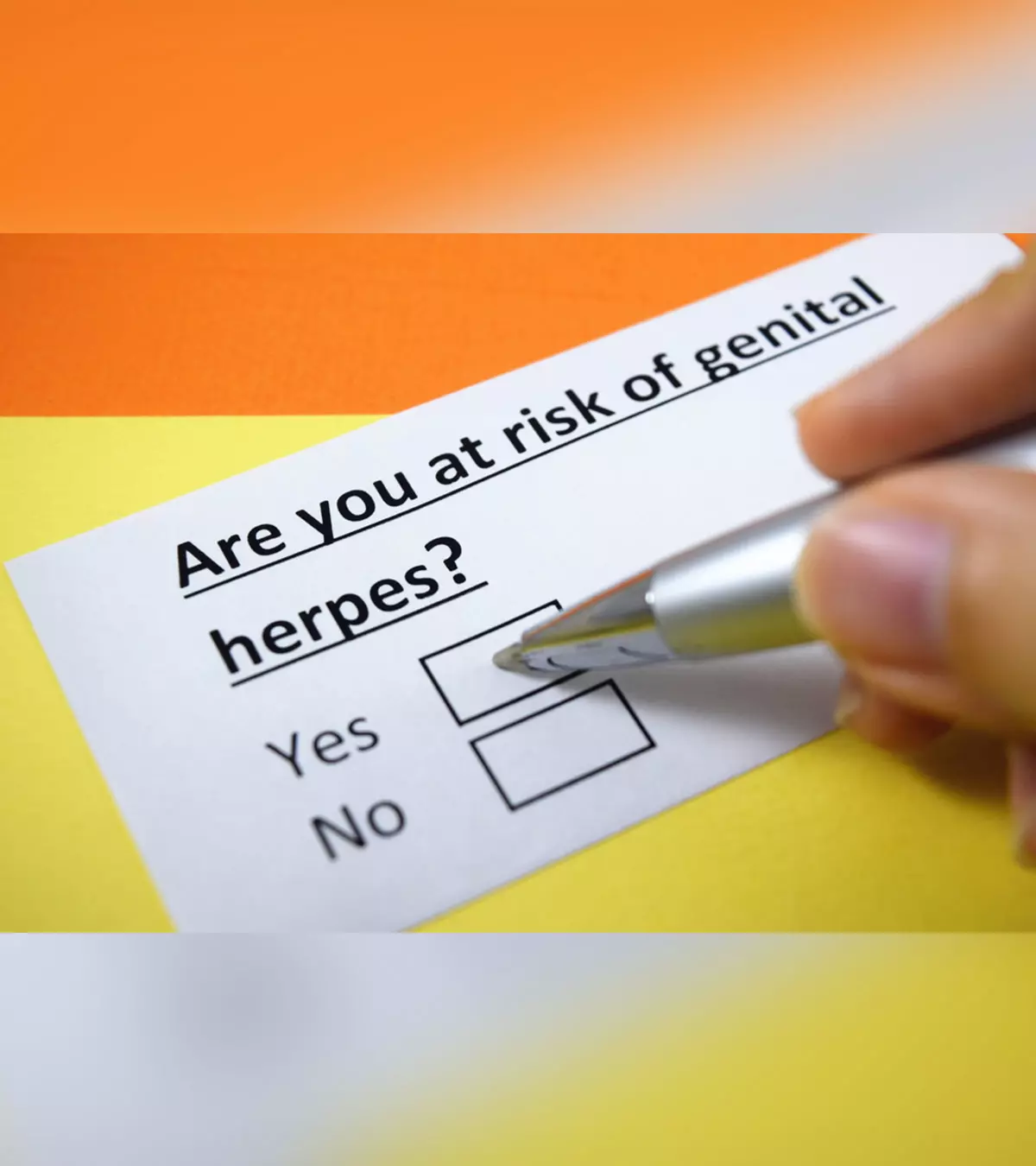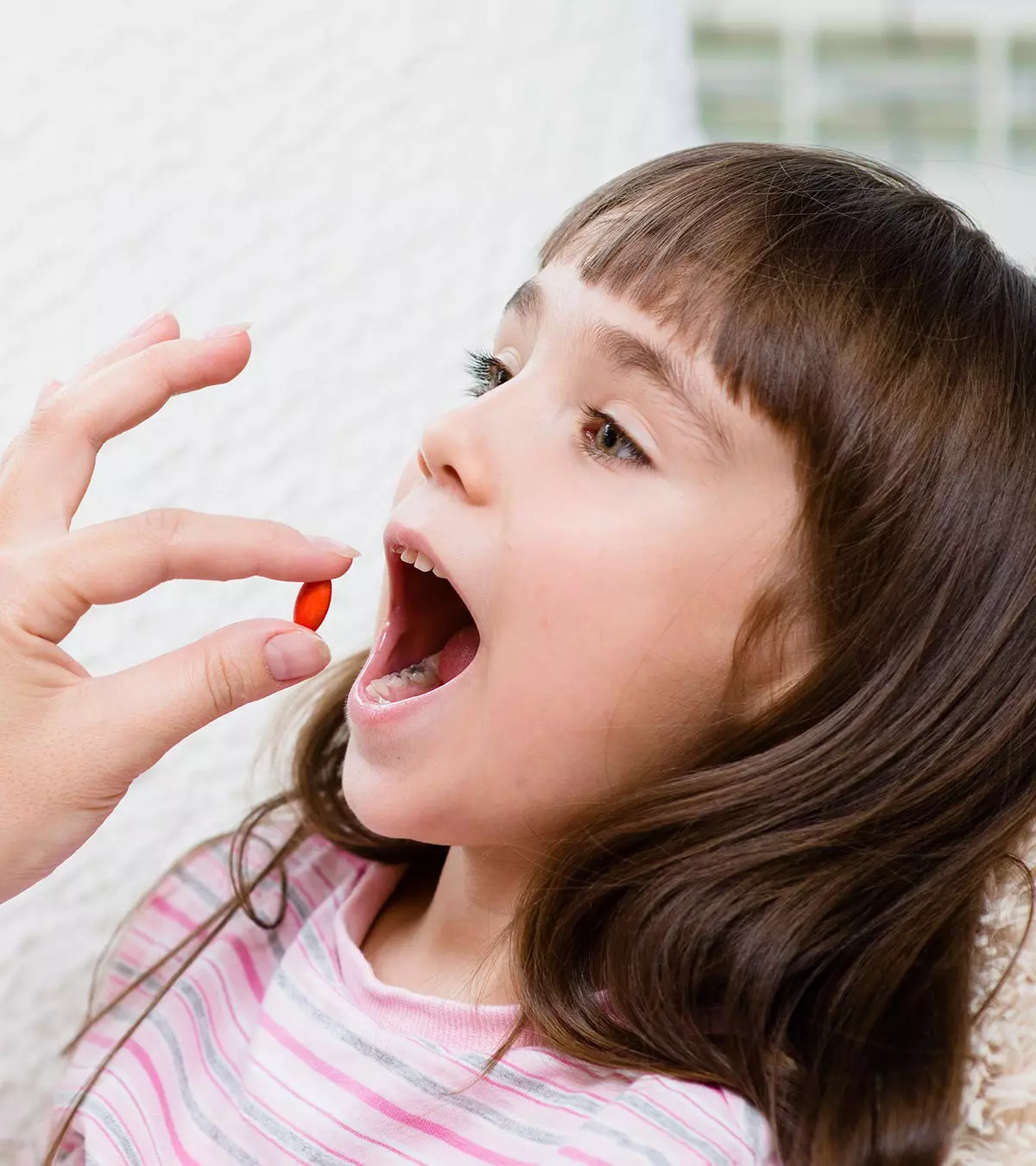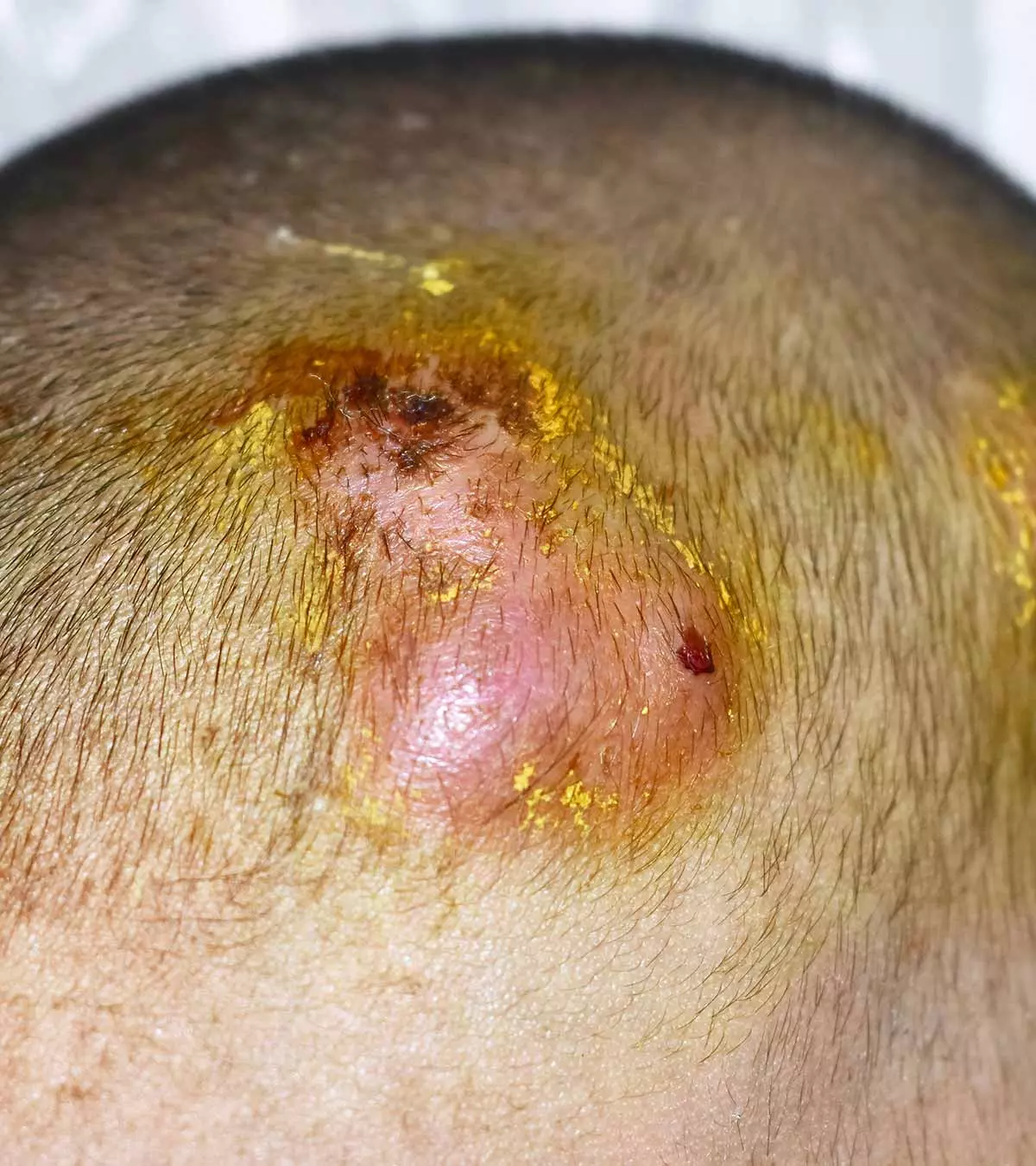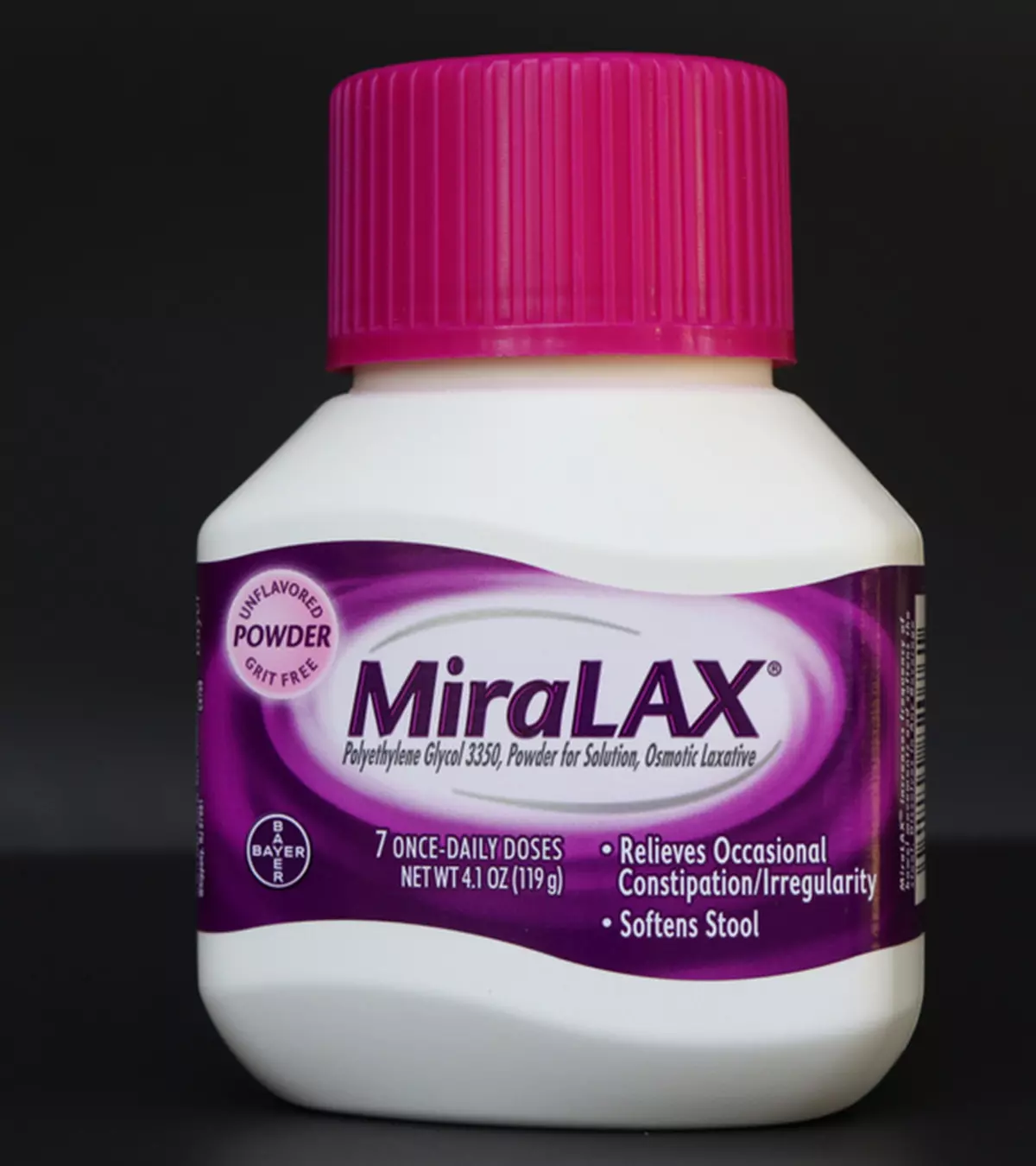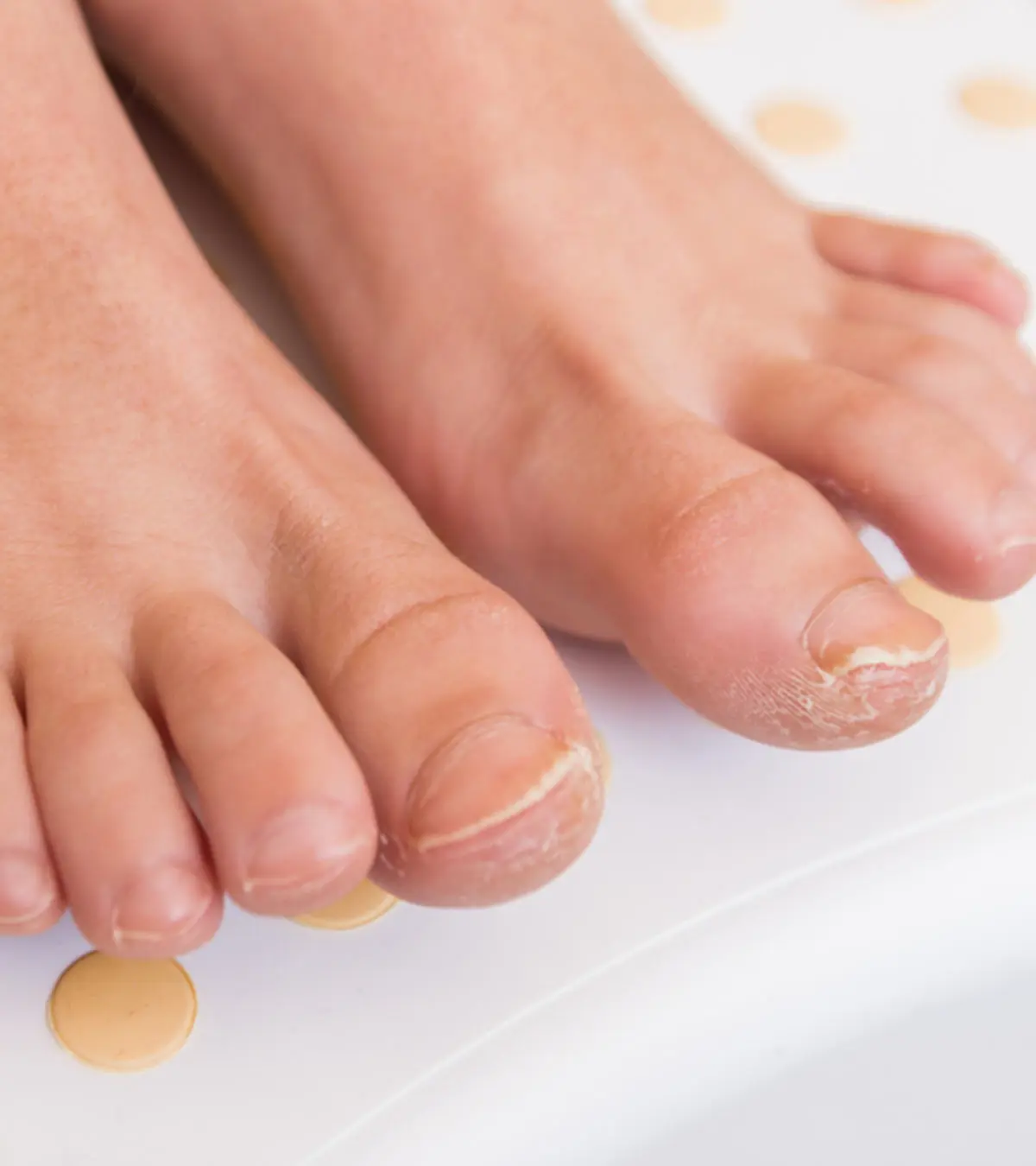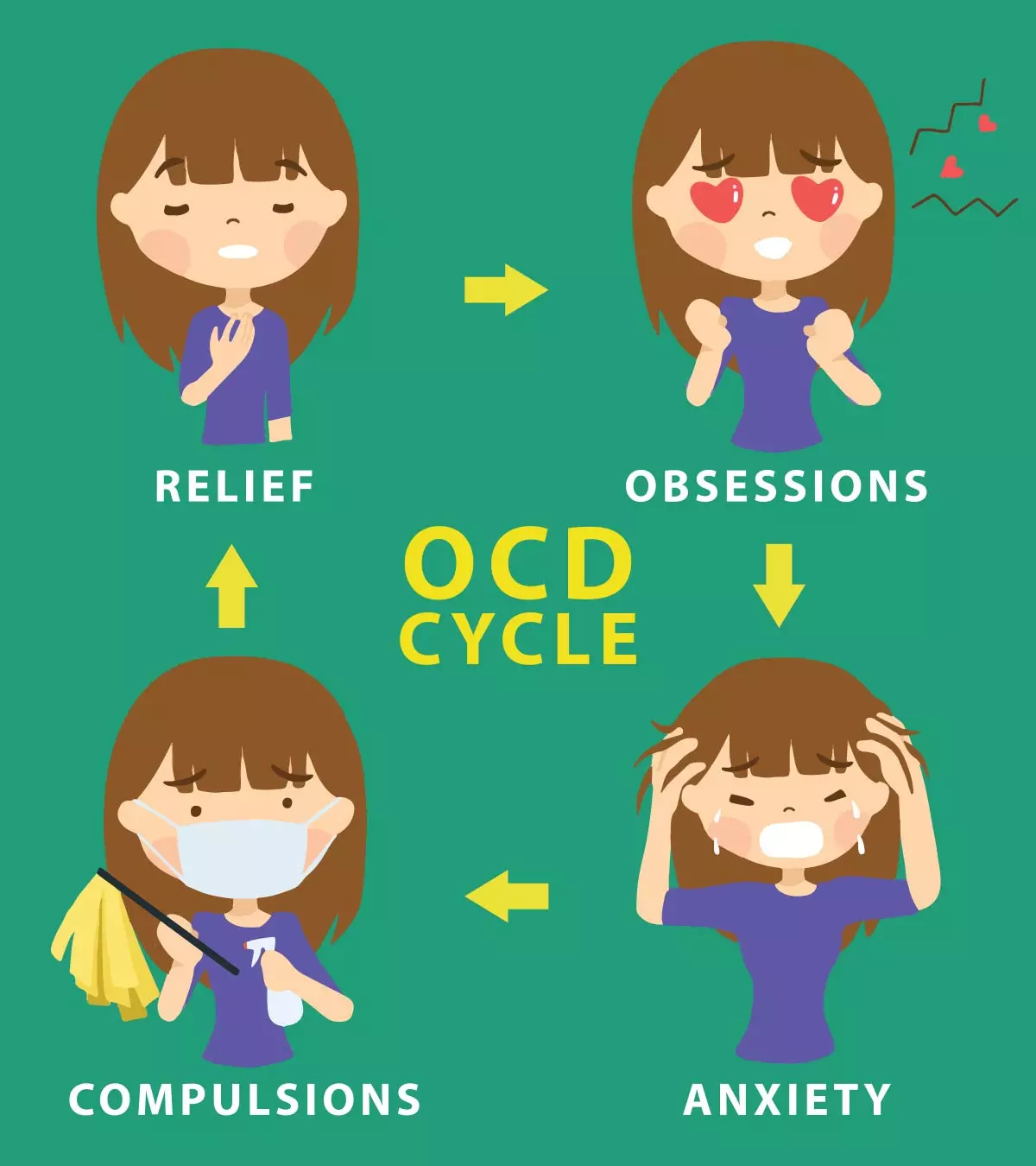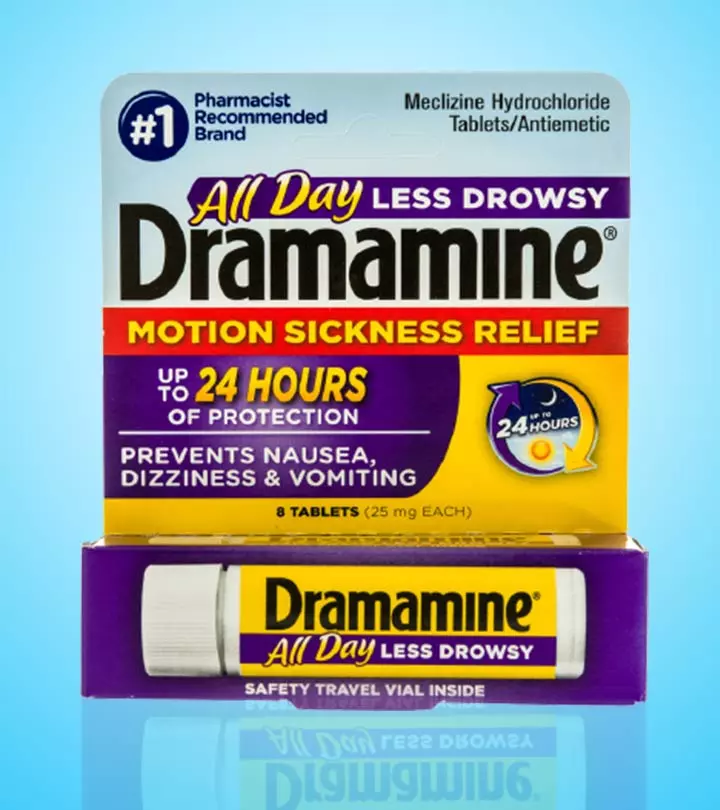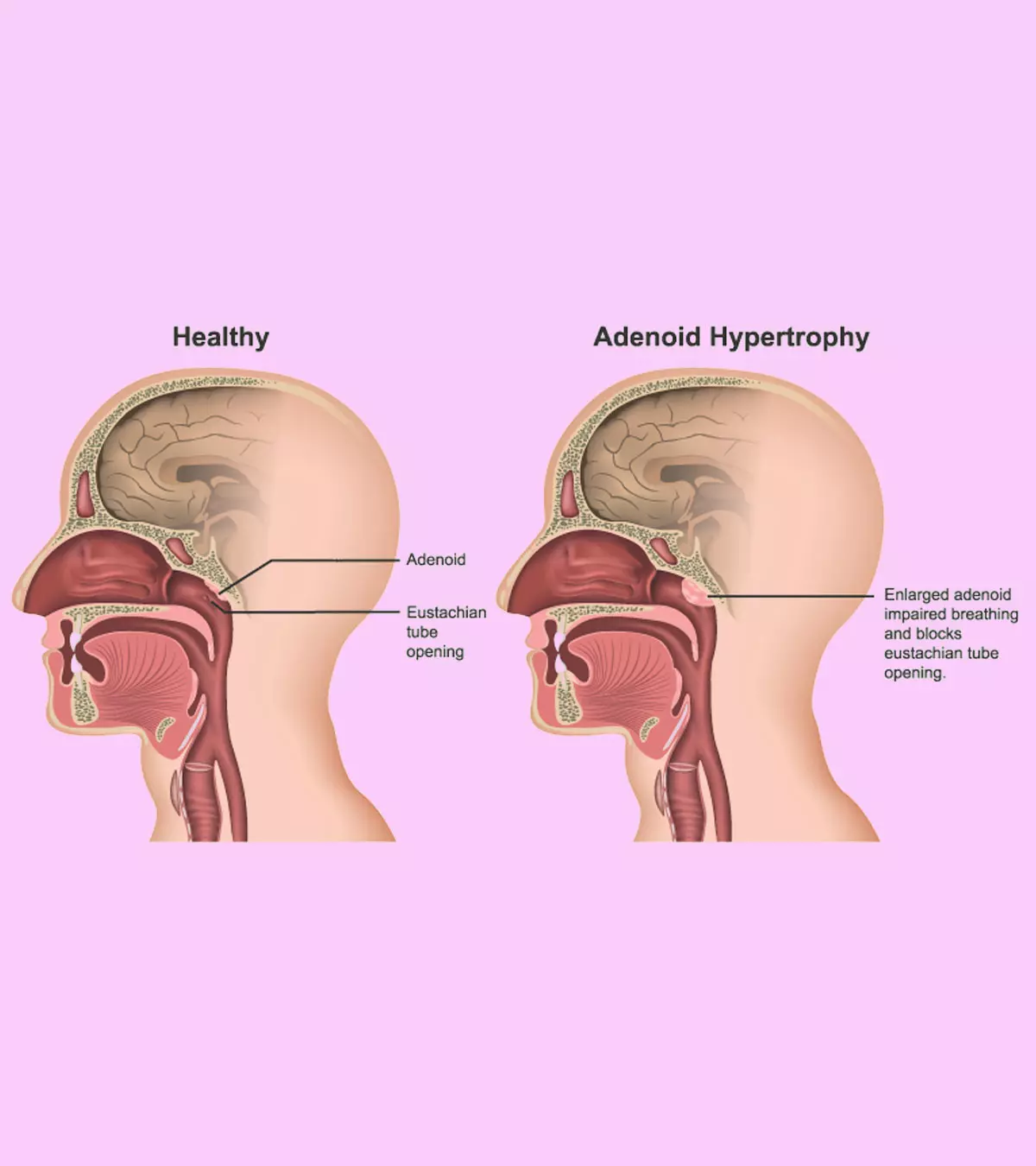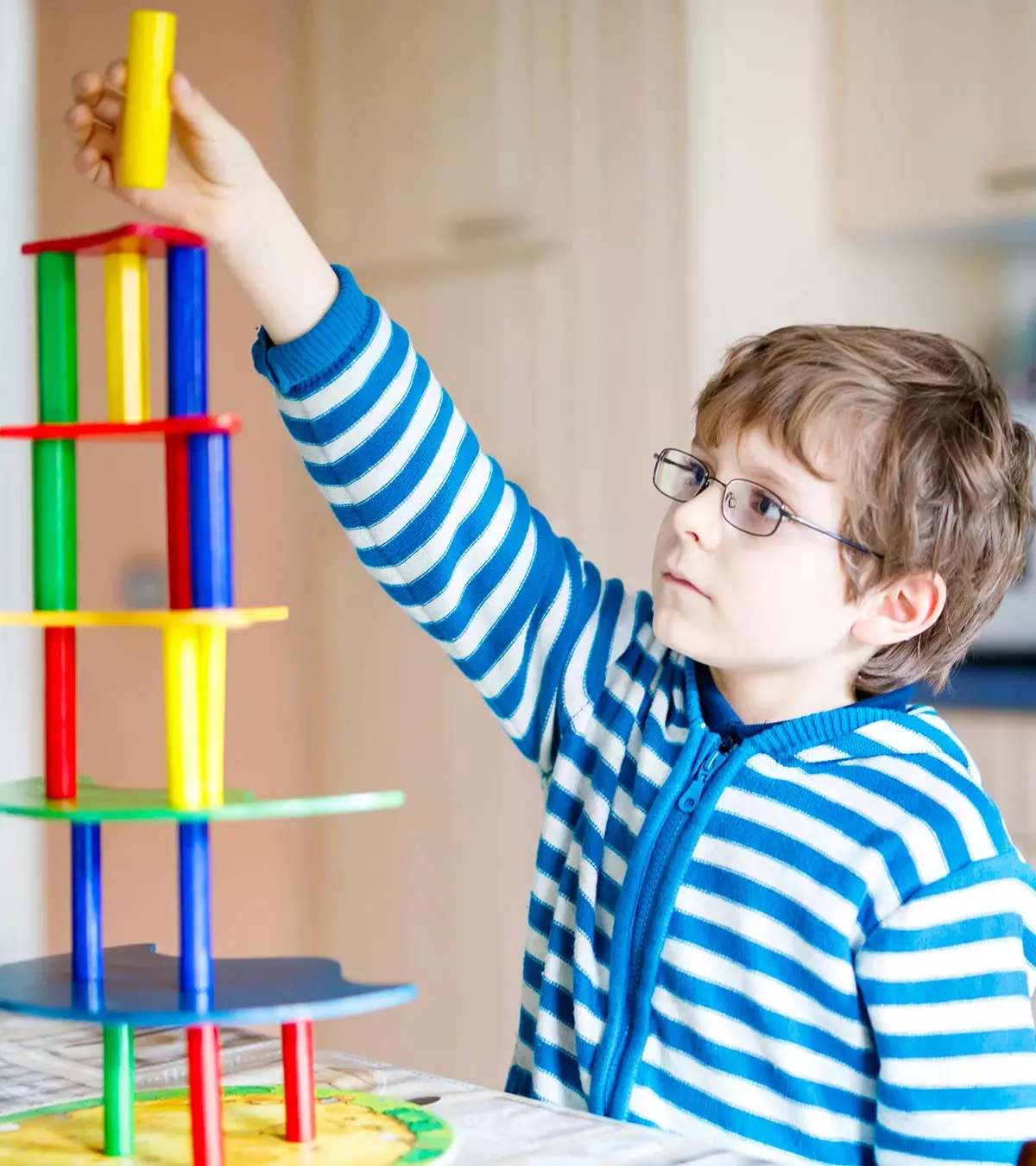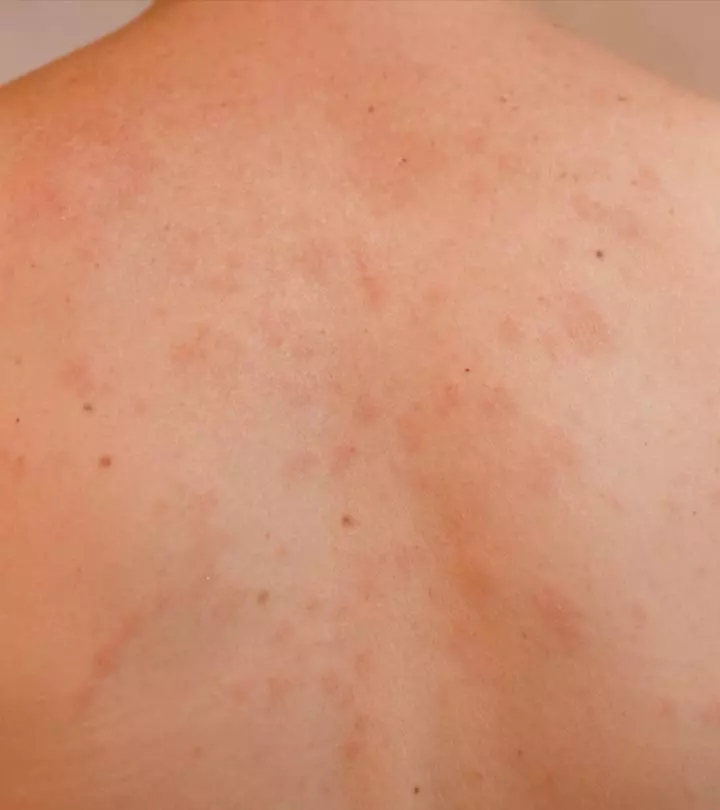
Image: Shutterstock
Pityriasis rosea in children is characterized by pink or red scaly rashes

. Usually, the rash begins as a single, one- to two-inch oval patch, called a herald patch. Eventually, it increases to multiple smaller and itchy patches. It is more common in older children and teens, and the underlying cause is usually unknown (1) (2).
The rashes may last for one to three months and be mildly uncomfortable. For most children, the rashes are mild, non-contagious, and do not leave any scars after healing. Pityriasis rosea can be treated at home with minimal or no medical intervention in most cases.
Read this article to learn about the symptoms, diagnosis, and treatment of pityriasis rosea in children.
Key Pointers
- Pityriasis rosea in children usually begins as a single reddish or pinkish patch that eventually spreads across the torso, neck, arms, and legs.
- Consult a doctor if your child has significant itching, a persistent congested nose, sore throat, or fever.
- A skin biopsy may be necessary to confirm the diagnosis of pityriasis rosea in children.
- Excessive itching can be relieved with cool compresses, antihistamines, and steroid creams.
Signs And Symptoms Of Pityriasis Rosea In Children
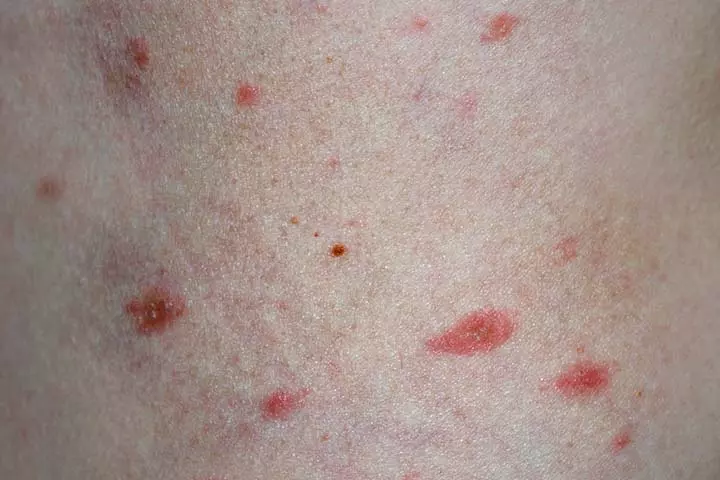
Image: Shutterstock
Pityriasis Rosea is a seasonal skin condition that often affects teenagers and young adults. It usually starts as a single, large reddish or pinkish patch, called the herald patch. It is followed by the appearance of smaller rash-like red patches on various regions of the upper body, including the torso, neck, arms, and legs. Several other common symptoms that may accompany the rashes are (3):
- Mild fever
- Sore throat
- Stuffy nose
- Headache
- Fatigue
- Swollen lymph nodes
Besides the above symptoms and skin rashes in children, pityriasis rosea doesn’t cause severe problems and seldom requires medical care. Nevertheless, consult a doctor if the child experiences excessive itching, persistent stuffy nose, sore throat, or fever.
A mother recalls the symptoms her son had before being diagnosed with pityriasis rosea. She says, “Days before my son’s 10th birthday, he got what we thought was a bug bite on his chest. He scratched it and the spot got bigger and redder. A couple of days after his birthday party at a nearby lake, he developed a rash all over his upper chest. At first, my husband and I thought he had an allergic reaction to the rash guard shirt he wore to the party, but after several more days, the rash continued to spread and began to itch. Finally, I took him to the doctor who diagnosed the rash as pityriasis rosea. The doctor told us there is no medication my son can take to speed up the recovery and that hydrocortisone and an antihistamine are really the only things he can take to help relieve the itching (i).”
 Quick fact
Quick factCauses Of Pityriasis Rosea In Children
There’s no precise cause for pityriasis rosea. The skin rash is non-contagious, which means your child cannot catch it from someone. Research indicates that viral infection, particularly by herpes virus, may also trigger an immune system response, which could potentially lead to the development of pityriasis rosea. Some other researchers believe an autoimmune reaction and seasonal changes may be responsible for these rashes (3) (4).
 Point to consider
Point to considerDiagnosis Of Pityriasis Rosea In Children
The doctor will note the child’s symptoms and ask parents about the child’s health history. They may examine the rash closely and consider the child’s medical history and symptoms to distinguish pityriasis rosea from other skin conditions. In rare cases, if the doctor is doubtful, they may order the following tests (3) (4).
- Blood tests: The blood test helps determine if the rash is caused by another infection, such as scarlet fever, which also causes red rashes.
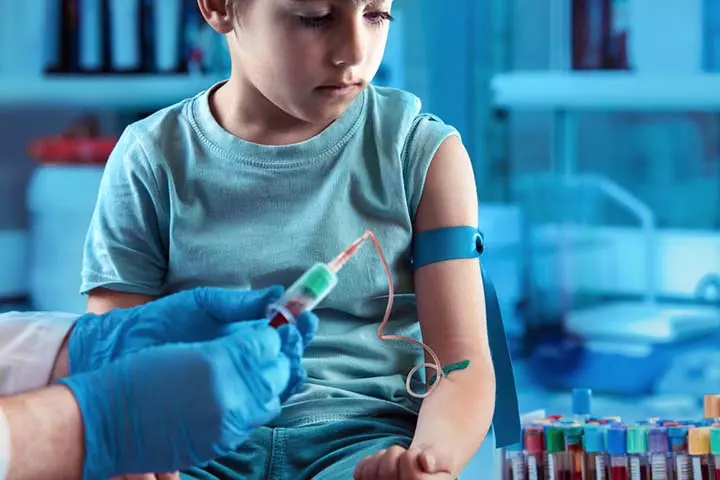
Image: Shutterstock
- Biopsy: The doctor will take a skin sample from the affected site and put it under a microscope to ensure the rash isn’t caused by other skin conditions such as ringworm.
 Did you know?
Did you know?Treatment For Pityriasis Rosea In Children
A child with mild symptoms of pityriasis rosea will not need any medical treatment. The healthcare provider may suggest the following interventions (2) (3) (4).
- Bathe gently using mild soap and lukewarm water. Alternatively, the child may have cool baths with or without oatmeal.
- Apply unscented, mild lubricants, such as medicated lotions or topical creams, as moisturizers to keep the skin moist. Additionally, zinc oxide containing creams may be effective as it helps soothe irritated skin.
- Put cool compresses on the affected areas to alleviate itching.
Besides these, the doctor may recommend moderate sun exposure, which may help heal the rash.
They may also recommend a mild hydrocortisone cream to reduce itching and redness. However, if the child has excessive itching, the doctor may advise the following.
- Over-the-counter (OTC) antihistamines or topical corticosteroids in the form of an ointment to relieve excessive itching.
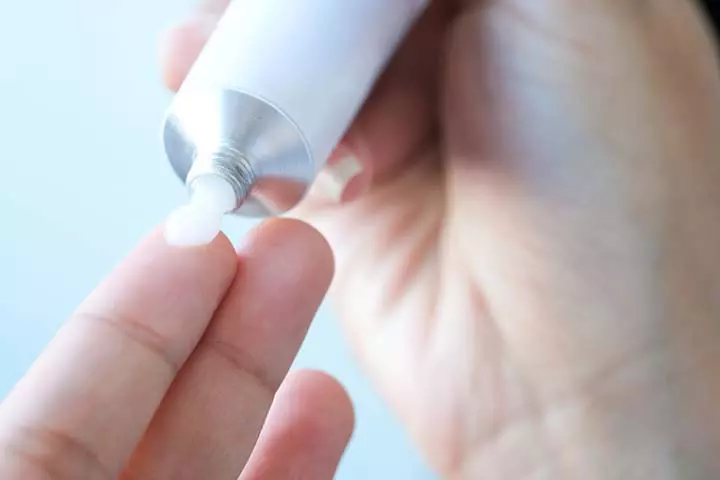
Image: Shutterstock
- Ultraviolet (UVB) phototherapy, which a dermatologist will perform in their office to resolve the rashes.
In most cases, the rash resolves within one to two months without any treatment. However, in some other cases, the rash may last for up to three months or longer. Call your healthcare provider if the rashes do not improve or worsen. It’s essential as persistent itching may cause secondary bacterial infection.
Frequently Asked Questions
1. Is sunlight good for pityriasis rosea?
In some cases, children with pityriasis rosea benefit from ultraviolet light. Thus, mild exposure to sunlight could help manage the condition (5).
2. Is pityriasis rosea an autoimmune disease?
A few conclusive studies have shown some autoimmune factors may be in play in the maturing of pityriasis rosea, but the disease itself is not autoimmune (4).
3. Are there any complications associated with Pityriasis Rosea in children?
No, usually, the rash does not reoccur once it is completely treated and healed. However, people with darker skin tones may have discoloration for some time due to the rashes (5).
4. Is there a way to prevent Pityriasis Rosea in children?
No, there is no way to prevent Pityriasis Rosea in children. However, the condition is harmless and can be easily treated at home, usually resolving within six to eight weeks (6).
Pityriasis rosea in children is usually not a cause for concern. It is seen more commonly in older children and teenagers. The condition is primarily self-limiting and does not need a medical intervention every time. The rash may mimic other skin problems, and a doctor can examine your child to rule out other conditions. You may consult your doctor and try simple home remedies to provide some relief to children experiencing the condition.
Infographic: How To Manage Symptoms Of Pityriasis Rosea In Children?
Characterized by pink or red scaly rashes, pityriasis rosea can make a child itchy and distressed, leading to cold-like symptoms. Since the condition has no specific treatment, managing the rashes and other symptoms is needed. Check the infographic below to learn how you can manage its symptoms in your child.
Some thing wrong with infographic shortcode. please verify shortcode syntax Some thing wrong with illustration image shortcode. please verify shortcode syntax
If Pityriasis Rosea has found its way to your skin, this video unravels the potential causes, symptoms, and treatment options. Equip yourself with essential information to navigate this condition with confidence.
Personal Experience: Source
MomJunction articles include first-hand experiences to provide you with better insights through real-life narratives. Here are the sources of personal accounts referenced in this article.
i. Sodee naturals + giveaway;https://sewvery.blogspot.com/2014_08_01_archive.html?m=1
References
- Pityriasis Rosea.
https://www.health.harvard.edu/a_to_z/pityriasis-rosea-a-to-z - Pityriasis Rosea in Children.
https://www.nationwidechildrens.org/conditions/health-library/pityriasis-rosea-in-children - Pityriasis rosea.
https://www.mountsinai.org/health-library/diseases-conditions/pityriasis-rosea - Pityriasis Rosea.
https://rarediseases.org/rare-diseases/pityriasis-rosea/ - Pityriasis rosea.
https://www.betterhealth.vic.gov.au/health/conditionsandtreatments/pityriasis-rosea - Pityriasis rosea.
https://my.clevelandclinic.org/health/diseases/17729-pityriasis-rosea#prevention
Community Experiences
Join the conversation and become a part of our nurturing community! Share your stories, experiences, and insights to connect with fellow parents.
Read full bio of Dr. Arva M Bhavnagarwala
Read full bio of Swati Patwal
Read full bio of Rohit Garoo
Read full bio of Dr. Joyani Das









